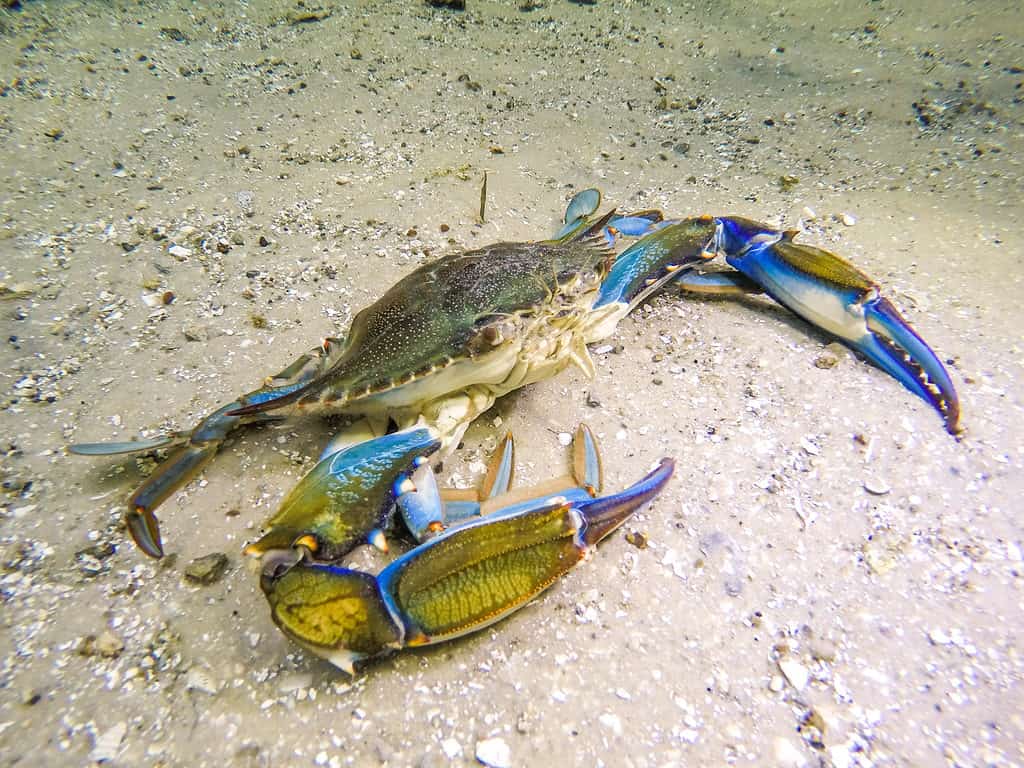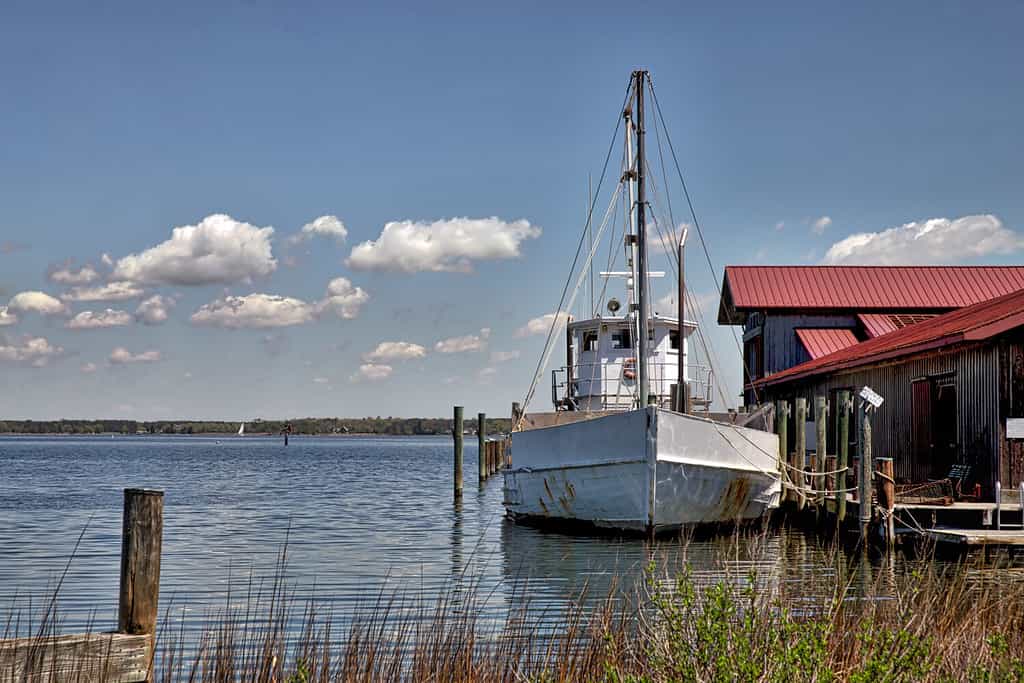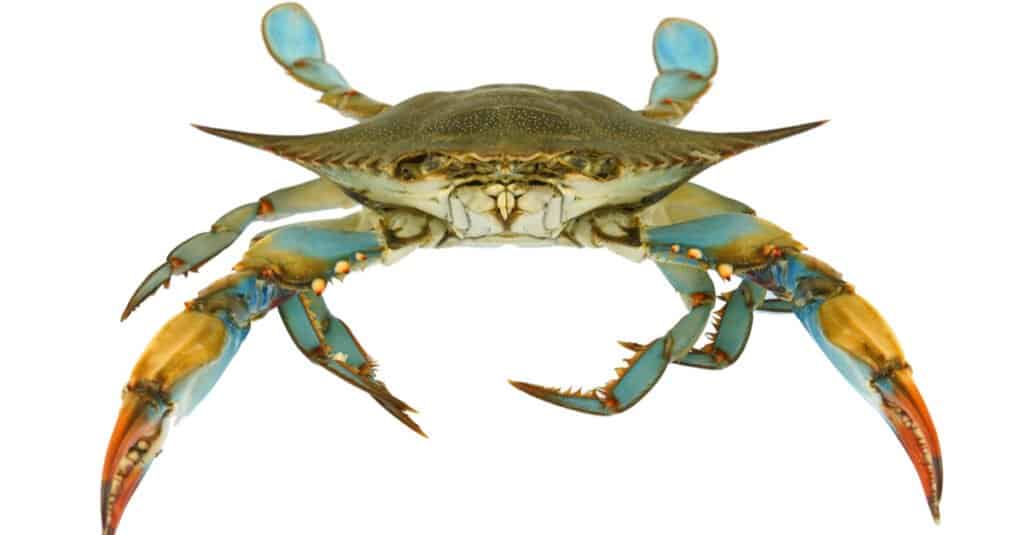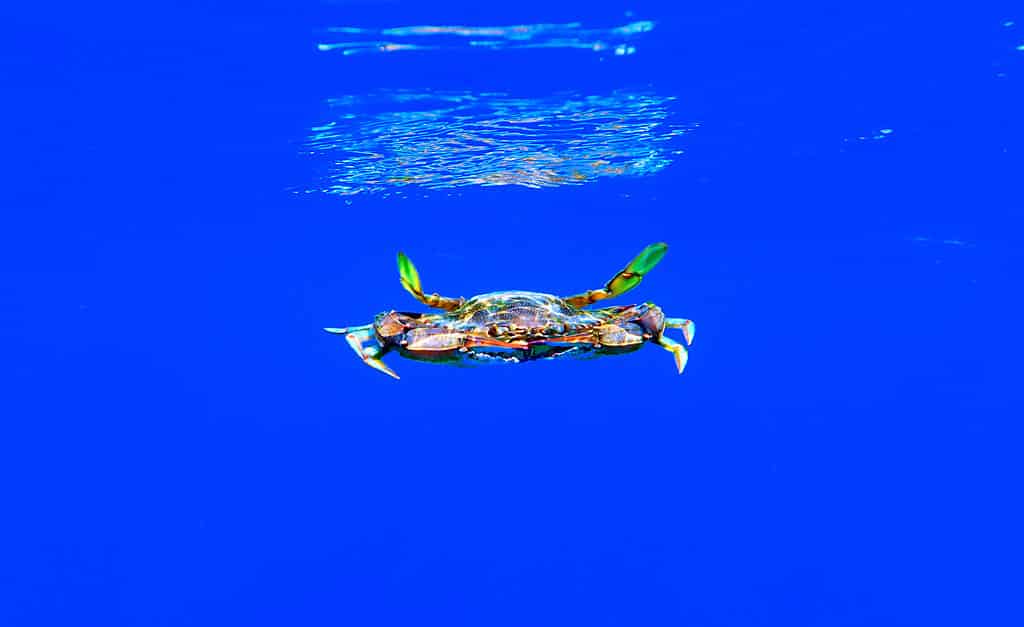Nothing says Maryland like a bushel of crabs. This popular dish in the Old Line State is so beloved that the blue crab has been the official state crustacean since 1989. If you’ve ever driven around Maryland, you’ve likely seen the state flag adorning crab decals everywhere you look.
Why is this crustacean so popular within Maryland? Besides being delicious, it is also very abundant in the Chesapeake Bay and related waterways. Many residents love to spend evenings, weekends, and any other time they can catching these amazing animals. The process is known as crabbing. While it uses tackle and lines, it is distinct from fishing.
When Is Crabbing Season in Maryland?

Blue crabs are classified by the size of their shell.
©Jen Helton/Shutterstock.com
There are a few regulations to crabbing in Maryland but the process doesn’t require extensive fees, licenses, or permits. The official crabbing season opens in the spring. In 2022, the Maryland Department of Natural Resources designated April 1 as the official start date of recreational crabbing season. This applies to the Chesapeake Bay, Atlantic Ocean, and related waterways such as tributaries and coastal areas.
Crab season runs all the way to the end of December. The late summer and early fall is the best time for crabbing. You’ll see a big boom in the number of people crabbing as well as the number of people frequenting crab restaurants. Commercial crabbing is also the busiest during this time and has the largest hauls. The availability of crabs can greatly impact the price.
Getting a License to Go Crabbing

The Chesapeake Bay is famous for its large number of blue crabs.
©Yvonne Navalaney/Shutterstock.com
It is important to note that you may or may not need a license to go crabbing in this state. Hand lines and dip nets, two of the easiest and most popular ways to go crabbing, do not require licenses. However, if you use trotline, collapsible crab traps, net rings, seines, or eel pots, you’ll need to pay for a license. These methods tend to yield more crabs, which is why they are more closely regulated.
There are plenty of places with public access, including on the Chesapeake Bay, where you can go crabbing. If you own private property with waterfront access, you can use up to two crab pots to catch crabs without having a license. You’ll need to take extra steps to ensure that other protected species, such as turtles, do not accidentally get into the pots, however. You can find devices that attach to the pot to keep bycatch away. If you put out crab pots, make sure that they are labeled with your name and address or official number registered with the Department of Natural Resources. You will need to register with the DNR so that crabbing activity and data within the state can be collected.
The one important caveat is that if you have a recreational crabbing license or are not required to have one due to the equipment you are using or the location where you are crabbing, you cannot sell the crabs that you catch. It is also illegal to catch and keep female blue crabs. Maryland is a bustling location for commercial crabbing and it is definitely allowed. You’ll just have to have a different type of license and follow other regulations.
Maryland Crab Bag Limits

Nets and pots are good ways to catch blue crabs, although the simplest way is to just put out a line with bait on it and wait for the crab to bite.
©Lena605/Shutterstock.com
The bag limits for crabs in Maryland are categorized by the bushel. The exact number of crabs in a bushel is different for small, medium, and large crabs. A small bushel typically includes 7 dozen crabs. Medium bushels are around 6 dozen crabs. Full bushels of large crabs are around 5 dozen. Crabs are categorized as small, medium, large, jumbo, or heavyweights/colossal crabs, although the last ones are quite rare.
Small crabs are typically between 5 and 5.5 inches from tip to tip. Medium crabs are 5.6 to 6 inches, large crabs are 6 to 6.5 inches, and jumbo crabs are 6.5 to 7 inches. Colossal or heavyweight crabs are anything that is over 7 inches.
Crabbing limits state that each person can harvest one bushel per day. If you are on a boat with multiple people, the limit is two bushels per boat.
Guide to Crabbing in Maryland

Blue crabs are named for the blue hue on parts of their claws.
©ND700/Shutterstock.com
Crabbing is a popular pastime because it doesn’t take much expertise or equipment. You can start crabbing with just a line, although some setups can get more complicated. A strong string with bait on the end is perfect for simple crabbing. You can stand on a pier or bridge with the line extended into the water, pulling it slowly. The crabs will come to the bait and clamp onto the line. Many people like to introduce their kids to crabbing using this method.
If you want to catch multiple crabs at once, crab pots or baskets are great options. These metal baskets are loosely woven out of galvanized wire. You can throw out the crab pot from a similar place, such as a pier or the shore. The crabs go into the basket, which has two chambers, and can’t find their way out. Using crab pots, bait is kept in a metal mesh box attached to the center of the crab pot. Crabs can sense the bait inside but can’t actually get to it. This results in multiple crabs coming to get a bit to eat only to get stuck inside the pot and pulled in.
Equipment for Crabbing

Chicken necks are easy bait to put inside crab pots.
©WoodysPhotos/Shutterstock.com
All crab traps must have a manual mechanism to close them or harvest the crabs. Crab traps that automatically close after the crab or other animal has gone inside are illegal, even though they are occasionally marketed as crab traps. The correct design for crab traps only closes them when the person harvesting crabs begins to manually pull the trap in. Up to that point, crabs and other animals are able to enter and exit the trap freely. Additionally, make sure that your crab pots have something that prevents bycatch from getting caught inside.
All crab pots should have cull rings inside. This makes sure that the smaller crabs are able to safely swim out and keeps the larger crabs inside. Any crabs under 5 inches across should be returned to the water to mature.
Best Ways to Eat Blue Crabs

Blue crabs move through water looking for food.
©Vojce/Shutterstock.com
If you’ve caught a bushel of crabs, it’s time to prepare and eat them. This is another fun pastime if you are in Maryland. Most people recommend steaming blue crabs as the best way to prepare them. They stay sweet and tender. Steaming also reduces the likelihood that the crabs will be overcooked. You can also boil the crabs in a large stockpot. You can season them before or after cooking, although most agree that seasoning them at both steps is ideal. Old Bay is a popular seasoning blend, although melted butter is equally delicious on crabs.
Keep in mind that you will be cooking blue crabs while they are still alive. If you are a bit uneasy about that but you still want to enjoy some tasty crabs, just go to one of the many amazing seafood restaurants in Maryland. You can order crabs by the dozen to enjoy right there. Most crab shacks bring all of the things that you may want to enjoy your crabs, including melted butter, Old Bay, and a bucket to put your discarded shells in. Taking crabs apart, also called picking crabs, to get to the meat is a famous Maryland tradition with different techniques that people follow.
Thank you for reading! Have some feedback for us? Contact the AZ Animals editorial team.








